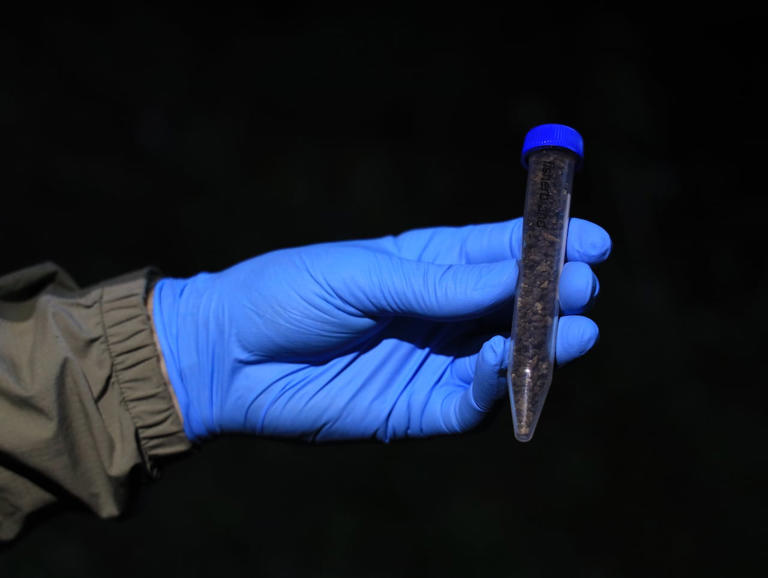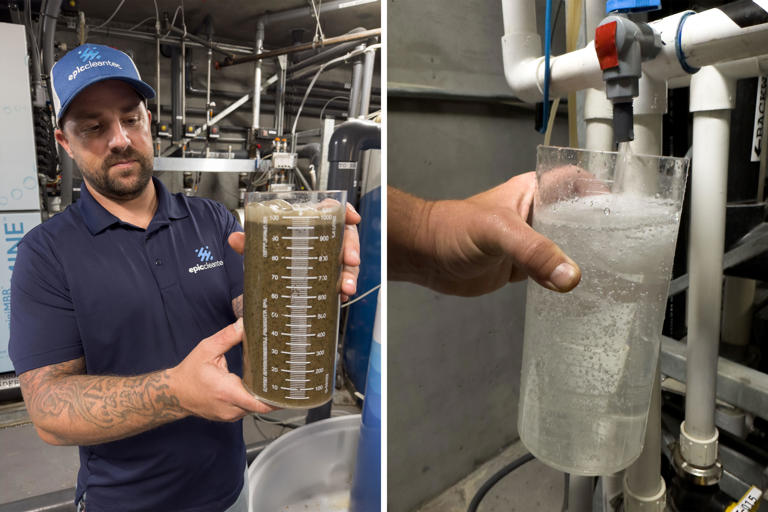Story by Emily Williams • CBC
T he easiest way to find a bat roosting site is to look for traces of guano — or bat droppings — underneath a bridge. Especially during the summer period when bats are raising their pups.
The City of Edmonton is undertaking this work with a new bat monitoring program this year. It's the first time the city has done an official assessment of what bats are in the city, and where.
Initiated due to a shift in the city's Mosquito Control Program, the bat monitoring program can help support species that serve as natural pest control.
The city wants to decrease pesticide use and reduce habitat suitable for mosquitoes, said Sarah McPike, senior biological sciences technologist at the city's Pest Management Lab.

Guano, a telltale sign that a bat roosting site is nearby. (Emily Williams/CBC)© Provided by cbc.ca
A bat's diet is more than just mosquitoes, however.
"While bats do use mosquitoes as part of their diet and we want to help support them in continuing to eat mosquitoes, they also eat a lot of other things like beetles and some aquatic bugs and moths — things that are big and juicy," McPike said.
"So all of that helps to contribute to a healthy ecosystem and we want to help support that within the city limits."

Cory Olsen, Nikqueta Mazur, and Sarah McPike looking under a bridge for bats. (Emily Williams/CBC)© Provided by cbc.ca
Nikqueta Mazur, biological science technologist at the Pest Management Lab, said the city is looking to see if there is anything they can do to encourage bats to be in the city. One way of doing that is looking at what habitats they prefer.

Martha Stewart Living How to Attract Bats to Your Yard—and Why You Want To
0:44
"Currently our best way of monitoring them is to do evening exit surveys," Mazur siad.
"We'll go to either a bridgeside or a bat box that we want to know if it's being used. And we will sit there in the evening for about an hour and see if we can see the bats exiting as they're coming out to feed."
Bats tend to nestle themselves into tight sheltered spots. While a bridge isn't a natural habitat for bats, they are a popular choice for roosts.
Bat boxes are artificial roosts, typically made out of wood and placed up high. The city installed several of them across the city this year.

Thermal cameras can be used to see bats nestled in bridge crevices. (Emily Williams/CBC)© Provided by cbc.ca
Cory Olson, program co-ordinator for the Alberta Bat Program, says another way to see how active an area is for bats is recording echolocation calls using specialized equipment.
These calls are at a frequency that cannot be heard by humans and are used for navigation. The sounds that bats make that we can hear are the social calls.
"You can imagine that if you're in a group with hundreds of other bats that you might get upset every now and then," Olson said. "So they emit this squeaking sound that kind of tells their roommate to back off."
Olson said if people stumble upon a bat roosting site, the best thing to do is leave it alone.
The bats in the city are fairly healthy for the time being, he said.
But white-nose syndrome is just starting to enter Alberta and may impact the province's bat population. Guano samples can be taken for testing to determine if the fungus that causes this disease is present.

A guano sample, collected to be tested for the fungus which causes white-nose syndrome. (Emily Williams/CBC)© Provided by cbc.ca
Another threat to bats in the city is cats, Olson said.
"The majority of the bats that get brought to wildlife rescue centres are bats that have been injured by cats. Keeping cats indoors is one of the most important things that we can do to help bats in the city."














